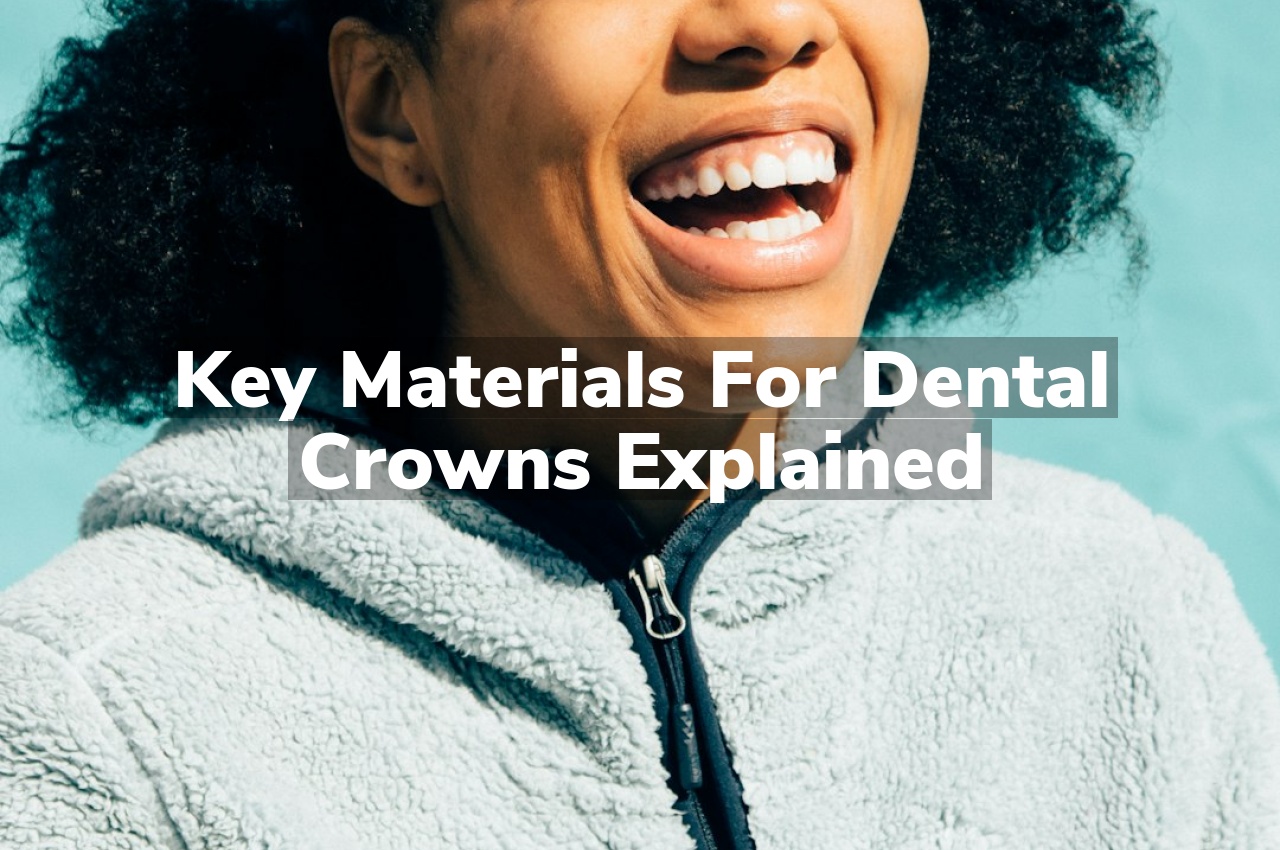Have you ever wondered what materials are used to create dental crowns? This post will explore the key materials commonly utilized in the fabrication of dental crowns, highlighting their general characteristics and how they contribute to the overall functionality and aesthetics of the crowns.
Porcelain Crowns: Aesthetic and Durable
Porcelain crowns stand out in the realm of dental restoration materials due to their exceptional blend of aesthetic appeal and durability. These crowns are crafted from high-quality ceramic materials, designed to mimic the natural translucency and color of real teeth, making them a popular choice for those looking to restore their smile without compromising on the look. The durability of porcelain crowns is attributed to their strong, wear-resistant nature, allowing them to withstand the daily rigors of chewing and biting with ease.
In addition to their cosmetic and functional benefits, porcelain crowns are known for their longevity. With proper care, these crowns can serve as a long-term solution for dental restoration. For individuals curious about the lifespan of various dental crown materials, further reading on the Expected Lifespan of Dental Crowns can provide valuable insights. This durability, combined with their aesthetic qualities, makes porcelain crowns a noteworthy option in the field of dental materials.
Gold Alloy Crowns: Strength and Compatibility
Gold alloy crowns have long been valued in the dental field for their exceptional strength and compatibility with the human body. These crowns are made from a mixture of gold, copper, and other metals, which together create a material that is highly resistant to wear and tear. Unlike some other materials that can cause allergic reactions or sensitivity in some patients, gold alloys are well-tolerated by most individuals, making them a reliable choice for dental restorations. Their durability is unmatched, ensuring that they can withstand the forces of biting and chewing over many years without breaking or chipping.
Moreover, the compatibility of gold alloy crowns with the natural tissue in the mouth is another significant advantage. They do not corrode over time, which means they maintain their integrity and do not release harmful substances into the mouth. This stability is crucial for maintaining long-term oral health and ensuring that the surrounding teeth and gums remain healthy. The aesthetic appeal of gold crowns, with their distinctive shine, adds to their desirability among patients looking for a blend of functionality and appearance in their dental restorations. Get durable dental crowns in Meridian.
Ceramic Crowns: Natural Appearance
Ceramic crowns are widely recognized for their ability to mimic the natural appearance of teeth. Crafted from durable ceramic materials, these crowns are designed to blend seamlessly with the surrounding teeth, offering a solution that is both aesthetically pleasing and functional. The material’s compatibility with the body, along with its color and translucency, closely resembles that of natural tooth enamel, making ceramic crowns a popular choice for those looking to restore their smile without compromising on the look of their natural teeth.
Base Metal Alloy Crowns: Resilience
Base metal alloy crowns stand out for their remarkable durability and strength, making them a popular choice for dental restorations that require resilience against wear and tear. Composed of non-noble metals, these crowns are highly resistant to corrosion and provide an excellent fit due to their minimal requirement for tooth removal. Their standout feature is the ability to withstand the forces of biting and chewing over long periods, ensuring longevity and maintaining oral health integrity. For those interested in exploring dental restoration options, Alliance Dental Care offers insights and information on various materials, including base metal alloy crowns, at Meridian Dentist.
Zirconia Crowns: Modern Advancements
Zirconia crowns represent a significant leap in dental restoration technology, embodying the pinnacle of modern advancements in this field. Crafted from zirconium dioxide, a highly durable material known for its strength and longevity, these crowns have become a popular choice for patients seeking restorative dental solutions. The material’s exceptional resistance to wear and tear, coupled with its ability to mimic the natural appearance of teeth, makes zirconia crowns a noteworthy development in dental materials science. As the dental industry continues to evolve, the adoption of zirconia crowns highlights the ongoing commitment to combining aesthetic appeal with functional durability in dental restorations.
Conclusion
For more insights, read reviews on Google Maps or call us at 208-646-9461 .




